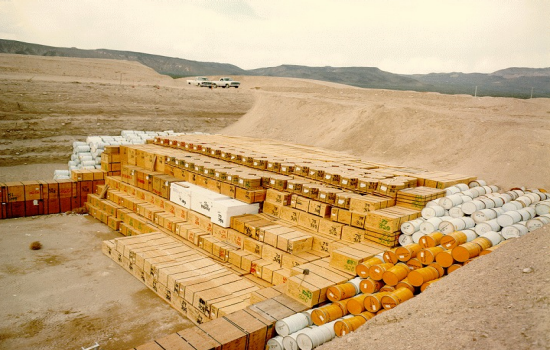
TOKYO (AP) - For years, Japan has struggled to find a site to safely store highly radioactive waste from nuclear power plants for as long as 100,000 years.
Tens of thousands of tons of spent fuel stored at nuclear power plants will remain dangerously radioactive for thousands of years - a vexing problem that nuclear-powered nations around the world face. After decades of studies, scientists now agree that underground storage is the best option, but finding a community willing to host a radioactive dump site is difficult.
Here is how some countries have tackled the issue:
-JAPAN: Despite trying to find a storage site for more than a decade, Japan still doesn't have one. It seeks to continue its fuel recycling program and envisions an underground facility that can store more than 40,000 vitrified waste cylinders, each weighing half a ton and enclosed in a thick steel canister and an additional thick layer of clay, at a site 300 meters (990 feet) underground or deeper. The 3.5 trillion yen ($35 billion) repository is planned for launch by 2040, but a delay is likely given the lack of site candidates.
-UNITED STATES: A plan to dispose of spent fuel rods from commercial power plants and high-level waste from the country's weapons program at a 500-meter-deep (1,640-foot-deep) underground site at Yucca Mountain in Nevada failed in 2009 after more than $90 billion was spent. The government is now looking at extending the use of interim "dry cask" storage for spent fuel to buy time until it can find a new site for a possible 2048 launch.
-FINLAND: One of the world's most successful models, a current test site, called Onkalo, which means "cave," will be used as a final repository starting around 2020 to dispose of 9,000 tons of spent fuel without reprocessing, to be stored in protective casks. The site will be located as deep as 450 meters (1,480 feet) underground on hard crystalline bedrock.
-SWEDEN: Another successful model, Sweden is expecting to start construction next year on a 500-meter (1,640-foot) -deep repository to dispose of 12,000 tons of spent fuel, without reprocessing, for a planned launch in 2029. The project has so far cost about $7.4 billion since 1990.
-FRANCE: Experienced in fuel reprocessing, fabrication and storage of vitrified high-level waste, France has helped Japan with fuel recycling technologies. The country has identified a candidate site near its deep underground research site in the northeast town of Bure, to be located as deep as 500 meters (1,640 feet) underground on clay bedrock. It will store vitrified waste and high-level waste from the country's fuel reprocessing program, for a planned launch around 2025.
-BRITAIN: The country has a fuel reprocessing policy, but not all spent fuel is expected to be recycled. Britain has not found a research venue or a final repository, though its Nuclear Decommissioning Authority has been searching since 2008. Under the current plan, Britain will dig as deep as 1,000 meters (3,300 feet) to create a repository, for a possible launch by the late 2050s.
-GERMANY: Under Germany's nuclear phase-out policy, all power stations are to be closed by around 2022. Spent fuel is being managed jointly by the utilities for interim storage until final disposal by the federal government. Separated high-level waste from past reprocessing in France and Britain will return to Germany by 2022 for final disposal. The northern town of Gorleben's salt dome is considered a potential site for geological disposal, with a planned launch around 2035.
Copyright © 2014: PennWell Corporation Subscribe to http://www.power-eng.com
http://www.power-eng.com/articles/2014/07/how-nations-are-tackling-nuclear-waste-storage.html